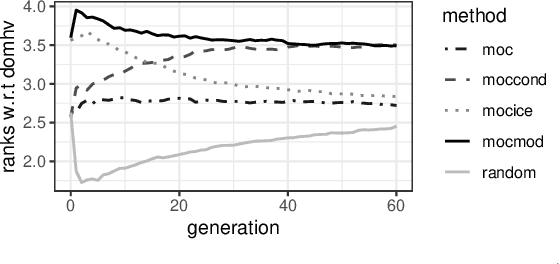Multi-Objective Counterfactual Explanations
Paper and Code
Apr 23, 2020



Counterfactual explanations are one of the most popular methods to make predictions of black box machine learning models interpretable by providing explanations in the form of `what-if scenarios'. Current approaches can compute counterfactuals only for certain model classes or feature types, or they generate counterfactuals that are not consistent with the observed data distribution. To overcome these limitations, we propose the Multi-Objective Counterfactuals (MOC) method, which translates the counterfactual search into a multi-objective optimization problem and solves it with a genetic algorithm based on NSGA-II. It returns a diverse set of counterfactuals with different trade-offs between the proposed objectives, enabling either a more detailed post-hoc analysis to facilitate better understanding or more options for actionable user responses to change the predicted outcome. We show the usefulness of MOC in concrete cases and compare our approach with state-of-the-art methods for counterfactual explanations.
 Add to Chrome
Add to Chrome Add to Firefox
Add to Firefox Add to Edge
Add to Edge